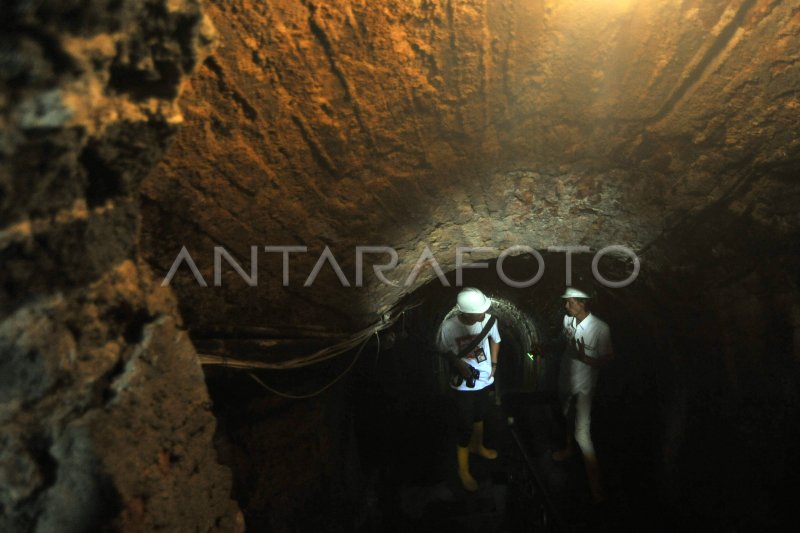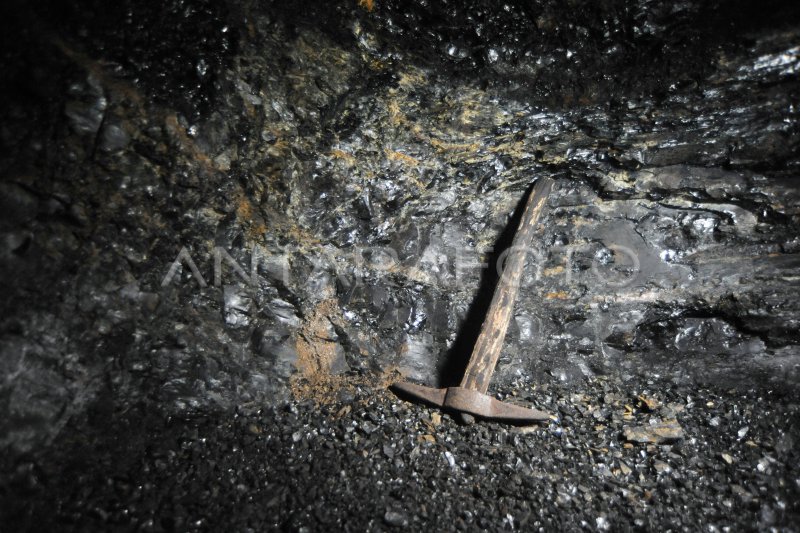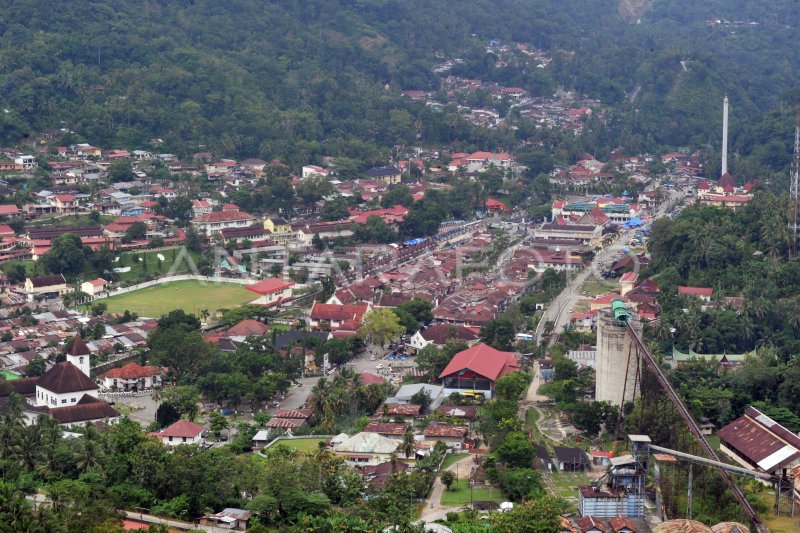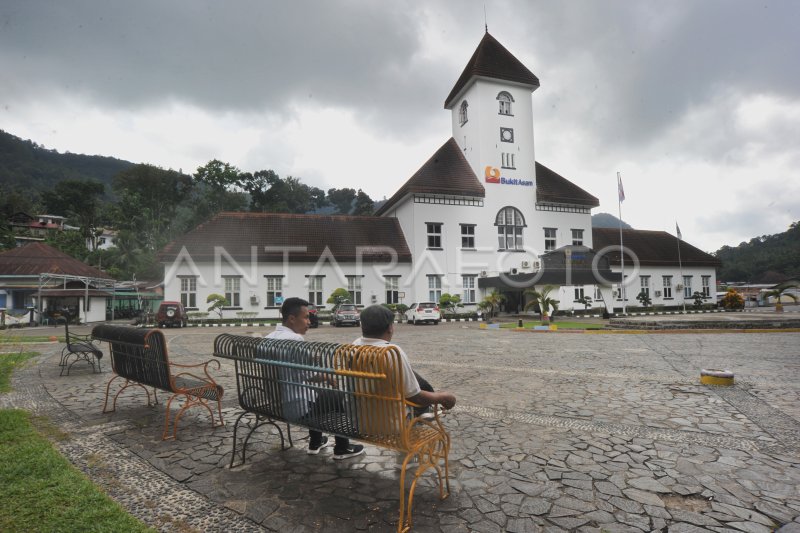Sawahlunto, located 95 kilometers east of the city of Padang, West Sumatra is known as a coal producing city since the Dutch origin geological experts, Willem Hendrik de Greve found the coal content in the river stream of Ombilin Rod around 1867.
Exploitation and production of the first coal began in 1892 so Sawahlunto became a mine city.
The Dutch Indian Government began to build a railway path to the city of Padang to facilitate the transportation of coal out of the city of Sawahlunto 1889.

The statue is diorama of coal mining activity in front of the Suro Mbah Hole, the coal mining used tunnel in Sawahlunto.

The tourist guide explains the history of the Suro Mbah Hole in the former coal mine in Sawahlunto.
Over the time, in the period of 1940 to 1980 the production of anjlok coal, again increased in 1990 and returned down in 2000.
This leads to moving the majority of mine workers to other cities and Sawahlunto is the city of death.
Since the establishment of a new vision to build the area, which realizes the Cultural City of Mine Tourism, Sawahlunto has been honed.

The tool used by "chain people" to dig coal mines rushed in Suro Mbah Hole, coal mining used tunnel in Sawahlunto.

The tourist guide person is in the Suro Mbah Hole, the coal mine used tunnel in Sawahlunto.
A number of cultural reserves, railways, including mine holes in the charcoal city is revitalized.
The Mbak Suro hole is a mine tunnel made by the chain (force work) in 1898. The tunnel became the witness of coal mining activity in Sawahlunto, which was then reopened as a tourist object since 2008.
Sawahlunto City Government also returns the legendary locomotive E1060 "Mak Itam" which once transports coal from the city to the Bayur Bay harbor.

Papan shows the number of tunnel distance signs of the entrance in the Suro Mbah Hole, Sawahlunto.

The landscape of the city of Sawahlunto, looks from the Peak of Cemara.
Until now, recorded 119 cultural reserves at Sawahlunto are still well preserved.
The Ombilin coal mine site is inserted into the list while UNESCO World Heritage of cultural categories since 2015.
The uniqueness of the Ombilin mine demonstrates the exchange of local information and technologies with European technologies in coal exploration in the late 19th century until the early 20th century in the world, especially in Southeast Asia.

The silo building, the former coal storage which is now a cultural reserve and is utilized as a cliff climbing area in Sawahlunto.

The visitor sits in front of PT Bukit Asam office which is a cultural reserve of cagar, in Sawahlunto.
The result, after the assessment, the city of Sawahlunto officially entered the list of UNESCO World Cultural Heritage Sites in the matching of the World Heritage Committee, Saturday (6/7/2019), in Baku, Azerbaijan.
The Ombilin coal mining site became the fifth fifth as UNESCO world cultural heritage in Indonesia, after Borobudur Temple (1991), Prambanan Temple (1991), Sangiran Site (1996) and Subak system in Bali (2012).
Photo and text: Iggoy el Fitra

The visitor crosses in front of the cultural reserves cagar in the landsoem Sawahlunto region.

Visitor observes the collection of Railway Museum in Sawahlunto.

The visit holds coal dismantling in the Ombilin Mine Museum, Sawahlunto.

E1060 legendary locomotive "Mak Itam" crosses in Sawahlunto.
Editor: Widodo